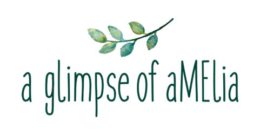Toilet Paper Review
TUESDAY REVIEW Toilet paper
Most commercial toilet paper is a combination of approximately 70% hardwood and 30% softwood.
Most companies use a chlorine bleaching process to make toilet paper white. Chlorine can produce dioxins and other cancer-causing pollutants, which is not only bad for the environment but also for our health.
Tree-free paper is a more efficient and cost effective alternative to traditional toilet paper because bamboo and sugarcane regenerate more rapidly than trees. Bamboo grows back in as little as three to four months, whereas trees can take up to thirty years.
Paper made with sugarcane and/or bamboo can also biodegrade faster than regular wood pulp paper. As a result, the resources needed for tree-free toilet paper are more abundant and require much less energy to produce.
Tree-free paper is biodegradable, septic safe, hypoallergenic, BPA free, fragrance-free, paraben-free, panda friendly, and verified non-GMO, making it the strongest, safest, and most sustainable toilet paper on the market.
The biggest difference between bleached versus unbleached toilet paper is their effect on women’s health. The chlorine used to bleach most brands of toilet paper can cause toxins to enter the body through the wiping process.
Studies show that formaldehyde (a known carcinogen) found in standard brands of toilet paper can lead to chronic vulvar irritation. Many fragrances and dyes in toilet paper can cause medical issues if they enter the bloodstream.
Bleach is a common additive for toilet paper products to create the desired bright white appearance and plush sensation. Many commercial toilet paper brands soak their pulp in different bleaches to achieve the look that they want. Chlorine bleach is one of the most toxic chemicals for humans (and our waterways) because it creates toxins that can easily enter through the skin and into the bloodstream and are flushed into the waterways. It is especially dangerous for toilet paper because naturally occurring bacteria in the body cannot break it down.
Commercial toilet paper brands use fragrance chemicals and hidden contaminants like BPA and other bisphenols. Both of these types of additives have been linked to negative effects on the reproductive system, cancer, and more. BPA is an unregulated chemical and has been linked to many recycled toilet papers which is why I would recommend avoiding some types of recycled toilet paper. Some companies strictly use only paper. (You should check with the company before using)
The different types of bleach:
Elemental Chlorine Free (ECF) is one example of an alternative to elemental bleach, and it is included in the American Forest & Paper Association’s (AFPA) resources of substitutes for chlorine bleach. ECF uses chlorine dioxide, which ultimately prevents the formation of those harsh toxins and carcinogens that can appear when using strong, elemental bleach.
Process Chlorine Free (PCF) and Totally Chlorine Free (TCF). PCF is more commonly used with recycled paper products that have not been re-bleached, while TCF includes no bleaching process whatsoever. ECF is the best choice for tree alternative products, as there has not been an option found that works for tree free materials. Most tree-free products require a type of chlorine derivative to achieve a soft and bleached material.
There are some great brands out there who use hydrogen peroxide as their preferred method of bleaching. Hydrogen peroxide has virtually none of the environmental and health concerns of chlorine bleaches. While hydrogen peroxide at particularly high concentrations approaching 35 percent can pose some health risks to those who don’t take proper handling precautions in industrial settings, there are none of the short-term or long-term disadvantages and outright threats to the environment posed by the use of many types of chlorine bleaches.
Currently on the market there are some amazing brands out there aiming to do better for the planet and reduce chemicals.
Any day of the week, a company choosing to use hydrogen peroxide or elemental free choline will far outweigh commercial bleached toilet paper. I’m saying that however if you wish to avoid any form of bleaching and potential toxin exposure from bamboo or recycled toilet paper your best option is:
@eco.cheeks which is completely unbleached bamboo toilet paper.
Some other amazing brands are:
@hellotushy up there with eco cheeks but not Australian owned. It’s a US brand
@whogivesacraptp
@pureplanetclub
@howwerollco
@wipethat Australia
@the_good_vibes_roll
Note: The bamboo used by these companies is sourced internationally mainly from China from sustainably grown pesticide free farms. Not the bamboo the pandas eat. Bamboo can regrow in as little as four months compared to a tree which can take 70 years!

